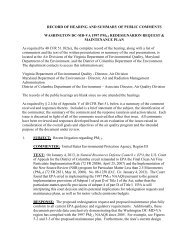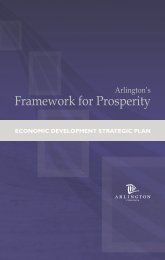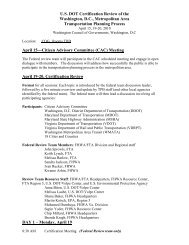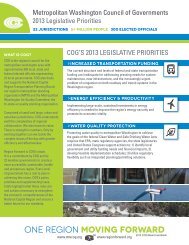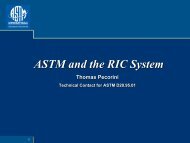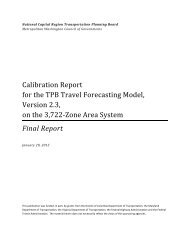PTI Local Government Energy Assurance Guidelines - Metropolitan ...
PTI Local Government Energy Assurance Guidelines - Metropolitan ...
PTI Local Government Energy Assurance Guidelines - Metropolitan ...
Create successful ePaper yourself
Turn your PDF publications into a flip-book with our unique Google optimized e-Paper software.
3.6.2 <strong>Local</strong> <strong>Energy</strong> Infrastructure/<strong>Energy</strong> Usage Characteristics<br />
Typically, energy uses are grouped into the following sectors: residential, commercial, institutional/governmental,<br />
industrial, agricultural, and transportation. Following the energy supply carefully through these different sectors<br />
will provide a comprehensive knowledge of a locality’s energy picture, one that is necessary to include in the EAP.<br />
It is helpful to be aware of and document the locality’s existing energy supply/use conditions so that the EAP takes<br />
into account the unique aspects of the local supply/use mix. For example, if the jurisdiction receives 50 percent of<br />
its electricity from the combustion of coal, and the other 50 percent is produced directly from nuclear, the chance of<br />
a complete blackout is likely more remote than for a jurisdiction that receives 100 percent of its electricity from a<br />
single source.<br />
When electricity fails, certain fuels are a primary backup supply to generator-supported electricity. Getting fuel<br />
to key assets such as emergency operations centers, hospitals, food supply dealers, water supply plants, and<br />
telecommunication networks can be essential during an energy emergency. Another challenge pertinent to fuels is<br />
assuring that gasoline and diesel fuel are available in ample quantities for emergency response and other vehicles.<br />
This likely will require bulk fuel storage of gasoline and diesel in multiple locations around the jurisdiction. It also<br />
will require that these fuels be kept fresh by continual use and turnover of inventory. Establishing relationships<br />
with the public and private sector bodies responsible for the distribution, tracking and regulation of these fuels is a<br />
worthwhile endeavor to pursue as part of the EAP. (See Section 3.8.2 for related information.)<br />
Identifying energy supply systems and infrastructure—electricity, natural gas, petroleum, and renewable resources—<br />
is a crucial task. By learning the specific roles and responsibilities of organizations within each of these systems,<br />
planners will gain more detailed and valuable knowledge of the overall energy situation in their region and/or<br />
local government. This knowledge can help them deal more effectively with an energy supply disruption. Once<br />
a supply disruption occurs, each of the energy infrastructure systems will have a pre-determined response, which<br />
jurisdictions need to expect and build in to their energy assurance response efforts. For example, planners need to<br />
know what happens to their emergency diesel fuel supply when normal fuel supply to their State is curtailed due to<br />
an international or domestic supply disruption. It is necessary to know what happens to the electricity supply when<br />
the local electric utility loses access to coal or natural gas due to a rail or pipeline disaster event. When emergency<br />
generators need to be refueled by truck, and trucks cannot navigate local streets due to extensive flooding, another<br />
fuel transportation method must be readily available. An EAP can help address issues such as these.<br />
50 | 3 – How to Develop or Enhance a <strong>Local</strong> <strong>Energy</strong> <strong>Assurance</strong> Plan



